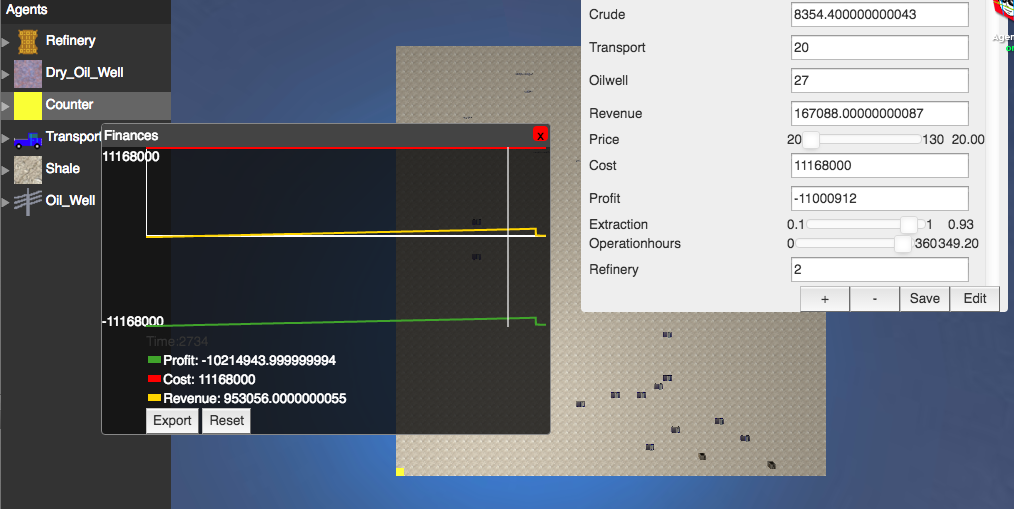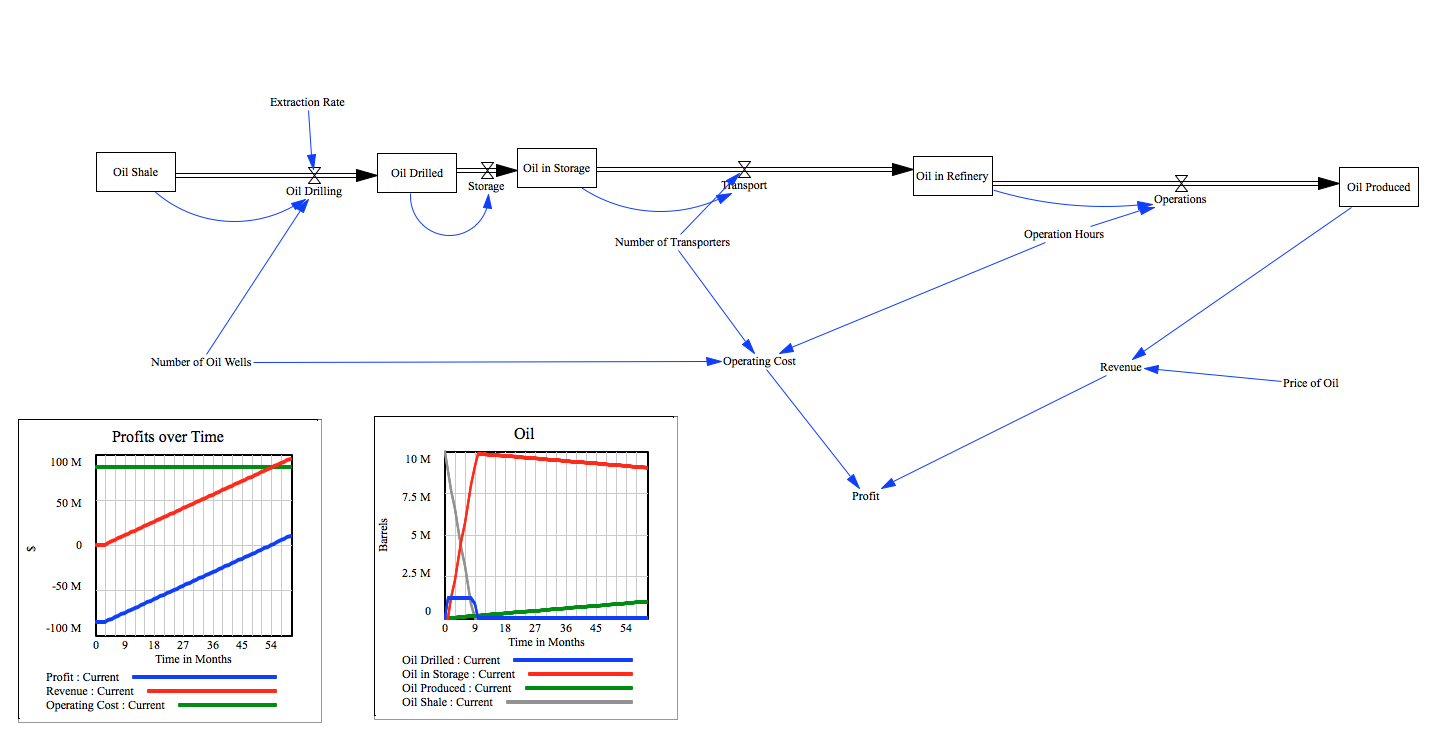
This model models the stages of a petroleum extraction and refinement company. First, there are oil wells. Oil wells extract 15,000 barrels of oil from shale each month. Oil wells cost $410,000 each month to maintain. Next, there are transporters. Transporters are trucks that carry the stored oil in oil wells and take them to the refinery. Each oil truck can only take 200 barrels of oil at a time, and cost $4,000 each month to maintain.
The System Model uses Vensim, a software that uses concept maps to model real life phenomenon. To access the system model, you first need to download Vensim. After downloading Vensim and the file link above, open the Vensim File.Then, press "Synth the Sim" to run the file. In Synth the Sim Mode, you can use the slider bars to change th different variables, which will affect the graph.
At its core, this model is a cost vs. revenue model modified for the oil business. Oil Wells and oil transporters have their own function in increasing the revenue of the oil business. However, increasing the amount of these segments of production decreases the amount of revenue and only increases the operation cost. The reason for this is because the oil wells and the transporters only extract and transport shale oil. It is the refinery that converts it into the different types of oil that can actually be used. The main way to increase profit is not by drilling more oil, as I previously thought, but by increasing the number of hours that the refinery is open. Another unique observation is how the price of oil affects the health of the business. Even if the production of oil is at a maximum, the price of oil can either set the business deeply into debt or make it prosper.

This model uses AgentCubes, an online software that allows the user to create 3D agent models. Once you click on "Agent Model", the page will transfer you to the Petroleum Industry Model design page. To rerun the model, press the "refresh" button. To add agents, press the "pencil" button and click anywhere on the model. To remove agents, click on the "eraser" button and click on an agent. On the design page, you can use the "pencil" button to add agents, and the "eraser" button to erase agents. After adding the select amount of agents, you can press the play button to run the model. While the model is running, a graph is shown indicating the revenue, cost, and profit of the company. To adjust the parameters, click on the "Gear" button and click on "Simulation Properties". There you can view and adjust the various parameters. The multiple parameters are as follows:
The AgentCubes Model is a smaller version of the Vensim model,but contains most of the parameters in each one. Like the VenSim model, it takes a long time for the business to get out of debt and start making a profit. The quickest way to do so is usually by an increase in the price of oil, increasing the extraction rate, and increasing the operating hours of the refinery. However, the biggest way to quickly gain profit is to make the refineries much closer to the oil wells, therefore making the time the transporters have to travel between the oil wells and the refiner much shorter, and therefore increasing efficiency. This matches the real world phenomenon of the oil business, where transporting oil is very costly, and therefore many oil companies build their oil wells onsite(i.e. on the drilling site). Another big factor in the profit of the oil company is the oil price. A small fluctuation in the price can have a major effect on the finances of the company. This is also true in the real word, where many oil companies struggle when the price of oil is low, but prosper when the price is high. Though the agent model does portray the finances of a petroleum company accurately, there are a few behaviors that do not make sense. One is the almost linear progression of profit and revenue. In the real world, the amount of profit and revenue would depend on a multitude of factors, not just price. Another anomalie is the infinite amount of oil in the oil field. In real life, oil would be concentrated in a few fields, and most wells would be dry.

The smaller AgentCubes Model. The finances are stable and Profit and Revenue are increasing at a steady rate.

A drop in oil prices on the larger version of the AgentCubes Model. Notice the sudden plunge in Revenue and Profit.